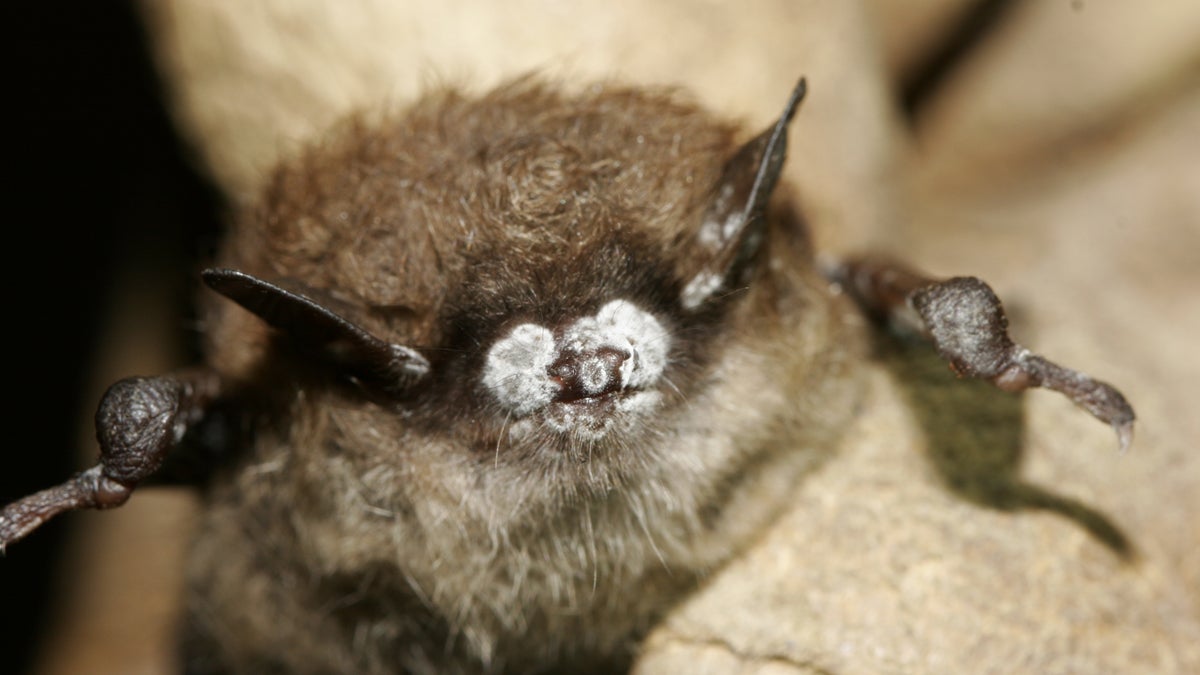This week in science: Young mouse blood, white nose syndrome and penguin flu
Listen
(AP Photo/New York Department of Environmental Conservation
The Scientist‘s Kerry Grens explains new research on young blood in mice, white nose syndrome in bats and a new bird virus in Antarctica.
In this week’s science recap, The Scientist‘s Kerry Grens updates us on the rejuvenating components of young blood in older mice, new revelations about the spread of white nose syndrome in bats and the discovery of a new bird virus in Antarctica.
Young blood in mice
Three new studies came out this week that show the potential benefits of injecting older mice with young mouse blood.
In one case, the plasma from young mice was given to older mice, which helped the older mice perform better on memory tests in the laboratory. In a second case, injecting a single protein called GDF11, which is abundant in the blood of younger mice, caused the old mice to sprout new brain cells and blood vessels in the brain. Finally, in the third study, researchers showed that GDF11 could also build muscle tissue and improve the strength and endurance of older mice.
None of these experiments were done in humans, so we still don’t know if these ingredients, like GDF11 or plasma, could slow, or even reverse, aging in people.
“And, of course, there’s always the concern when you’re giving somebody an agent that causes growth in one way or another, whether it’s a blood vessel or a brain cell, that it could develop into a cancer,” says Grens. “So, we are a long way away from finding the actual fountain of youth.”
Linking female bats to white nose syndrome
White nose syndrome is a deadly, fungal disease found in bats, especially little brown bats. In the past five years, the disease has spread rapidly throughout eastern and central Pennsylvania, but a small corner of western Pennsylvania seemed to avoid the infection for a couple of years.
Researchers tested the bat genes of uninfected and infected colonies and found that the bats from the unaffected holdouts of western Pennsylvania had a different set of genetic markers than the infected bats from eastern and central Pennsylvania.
“These genes were only genes inherited from female bats,” Grens says. “So researchers conclude that it’s the migrations of female bats that are linked to the spread of white nose syndrome.”
The hope is that this information may help predict where the disease might spread next and how to stop its progression.
Penguin flu
A new type of the avian influenza virus has been detected in penguins in Antarctica. The infected penguins show no signs of sickness but the virus is unique in that its closest strains of flu emerged decades ago.
Researchers aren’t sure exactly how the virus got to Antarctica, how long it’s been there or how it specifically affects the penguins.
As for the virus’ possible spread to humans? Grens says that’s not too much of a concern.
“They did expose ferrets to the virus and the ferrets didn’t catch it, so I don’t think it’s going to turn into any global pandemic,” says Grens. “But, as we know, the flu can mutate very quickly and I think the concern is more for wildlife at this point than for humans.”
Kerry Grens is an Associate Editor at The Scientist and a regular contributor of The Pulse.
WHYY is your source for fact-based, in-depth journalism and information. As a nonprofit organization, we rely on financial support from readers like you. Please give today.



